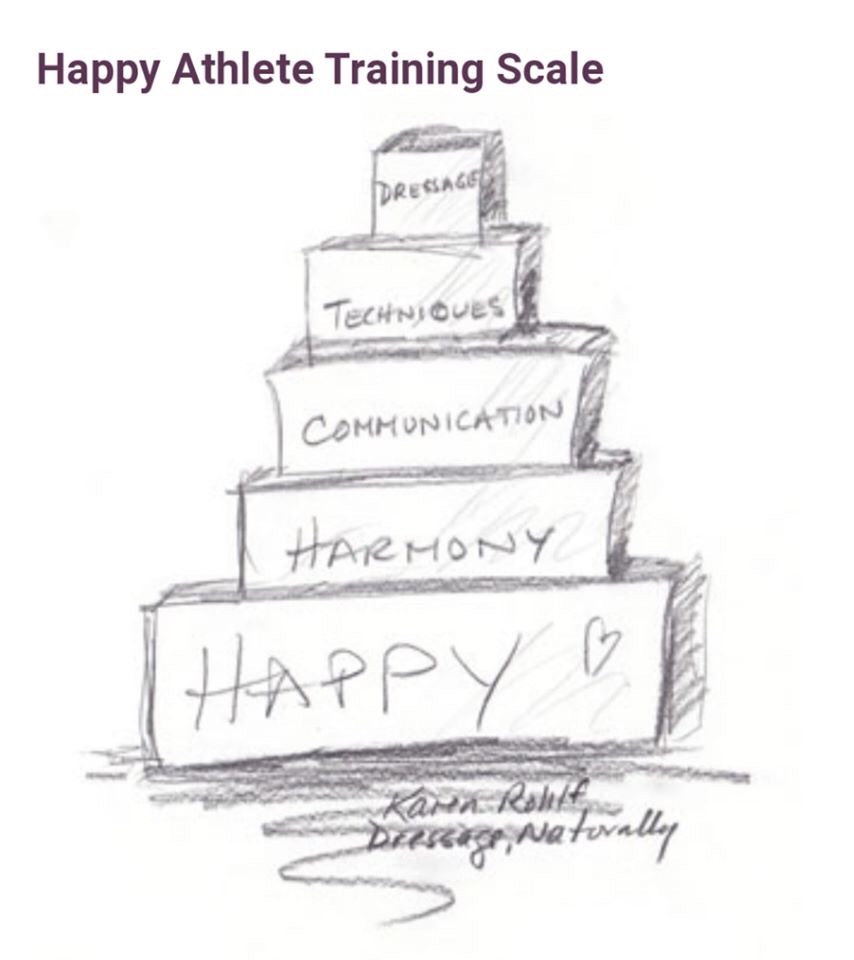(“An orderly flowchart . . . would not conform to reality.”)
 This is Karen Rohlf’s training scale. She is a well-known Natural Horsemanship trainer who worked with the Parellis for a long time and before that with Anne Gribbons. I don’t mean to debate the pros and cons of those techniques, but suffice it to say that I am in favor of any approach which helps a horse and rider learn to better understand one another. There is no way to argue we would prefer an unhappy partner in an unharmonious relationship!
This is Karen Rohlf’s training scale. She is a well-known Natural Horsemanship trainer who worked with the Parellis for a long time and before that with Anne Gribbons. I don’t mean to debate the pros and cons of those techniques, but suffice it to say that I am in favor of any approach which helps a horse and rider learn to better understand one another. There is no way to argue we would prefer an unhappy partner in an unharmonious relationship!
As I pointed out, however, in DRESSAGE Unscrambled, whether it be the conventional training pyramid or this one, it is not meant to be interpreted as a linear progression. An orderly flowchart would make things so simple. Unfortunately, it would not conform to reality.
Let’s look at the pyramid above. “Happy” is good—No doubt about it. But at face value a happy horse can be one that’s happy to walk all over you. Where is “Harmony” on the pyramid? A harmonious relationship makes training easier and more effective. I would place it near the apex of the diagram. For argument’s sake we could even merge it with “Dressage.” Just convoluted semantics perhaps, but while you can have harmony (of a sort) without dressage, almost by definition never the opposite.
Dressage, of course, is way more than dressing up in your black coat and riding down the centerline. It is a modality of inter-species communication. Think of all the elaborate exercises we use and the complex, building block way in which the horse has come to understand our wishes. All this is inseparable from “Communication” on the chart.
Ultimately it’s all about engagement— in this case not the technical weight bearing, stepping under from behind kind but engaging the horse’s mind so he will trust and focus allowing everything else to happen. The Rohlf/Parelli games are one structure around which to build this relationship. My point is so is the practice of real Dressage.
